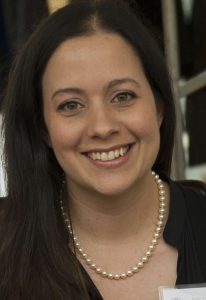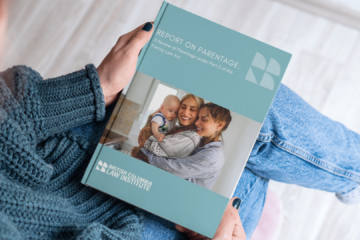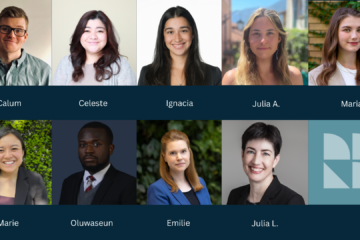Valerie Le Blanc Gives Keynote Address at Inter-Cultural Association of Greater Victoria Event
June 14, 2019
BY Valerie Le Blanc
On June 13th CCEL Staff lawyer Valerie Le Blanc gave the keynote address to the Inter-Cultural Association of Greater Victoria’s event to launch their project on the value of aging across cultures. Below is her keynote address.
Keynote Address

With the Canadian Centre for Elder Law, a good amount of my time is spent researching and examining how the law impacts older adults, and the issues that aging and ageism raise for older adults living in this community, this province, and this country. A lot of our expertise also comes from learning from, and listening to, the people we meet about what ageing and ageism means to them. From engaging in conversations about it. And I’m here today to start the conversation about the Value of Aging Across Cultures.
- Culture and Aging
When I was asked to speak to you about this theme it occurred to me just how important and impactful one’s own culture is to not only the way we approach aging, but to how we treat others who are aging around us. The reality is, no matter what culture you connect with, we are all aging within it.
There was an interesting talk several years ago that looked at how individuals and communities age across the world. What came out of that discussion is that there are vast differences in how individuals and groups, depending on their culture, will view and treat their aging community members. Some will respect them without question, taking aging family members into the home to provide care, security, and support to one another. They are held to the highest regard in one’s family, commended for their knowledge, experiences, and practices. Seen as offering valuable support and lessons to family. Life experts, if you will, on family, tradition, and values.
But, and depending on the culture you connect with, that image can sometimes shift to something less positive. Some cultures treat aging as a comedy, making statements like, “that’s just what happens when you get old”, or “he’s having a senior’s moment”. Other cultures will see people go so far as to outright disrespect their elders, seizing opportunities to challenge the wisdom and practices they hold as being outdated or of no value. And, in the worst cases, we hear about, some will just choose not to see.
- The Problem of Ageism
When we speak with seniors about aging, one of the ideas we hear over and over again is that people don’t seem to notice them anymore. One woman said to us: “When your hair starts turning white, you fade into the background, like a ghost.” They shop in a store, and the younger adults get served first. They get on the bus, and the young people in the accessibility seating area keep looking down at their cell phones, failing to see the older adult who just boarded the bus. This is something I’ve witnessed all too often as a dedicated rider of the transit buses both here and back home in Toronto. Even though the signs of “priority” are there, older adults aren’t always shown this priority in practice. Or, if others do see them, people often assume they don’t understand things as well as other younger adults. It is as though their brain dissolves in time with the whitening of their hair.
One senior summarized things like this: “At the bank, the teller will talk to everybody BUT YOU about your money.” We’ve heard stories about support persons going to doctor’s appointments and staff asking “What does your mom want?” Instead of asking her directly. One woman said to us: aging means “someone is always making decisions on your behalf.”
For many, life becomes a constant struggle to assert the right to autonomy and remind others of their intelligence, and of their voice. It is also a struggle to hold tight to a sense of self in the face of ageism. One woman said to us: “I feel stupid anytime I do or say anything because older people are told they are feeble-minded.” Another woman said to us that she was evicted from her apartment because the landlord said should be in a long-term care home now that she was older—even though she was capable of living independently, and wanted to stay in her long-time apartment.
The reality is, Ageism is everywhere. It has been described as the most tolerated form of prejudice in Canada. Seniors tell us they want to be seen. And not just seen as recipients of care or, worse yet, as burdens on the health care system or the public pensions regime, or as burdens on their families. They want to be seen for who they truly are—people living their own lives, contributing to their families, supporting community organizations, living their passions, and learning new things.
We’ve heard about immigrant seniors being denied services because staff do not want to see Canadian money go to immigrant older people whom they assume have never worked in this country—even though a denial of services means they are effectively trapped in abusive family relationships. In reality, many older immigrants came to Canada to provide childcare for their children, because we lack adequate and affordable childcare in this country. In this way, immigration is part of our national policy response to the need for childcare. And yet somehow there remains this notion that these seniors are not contributing to the economy. These attitudes reflect ageism and xenophobia, and they harm vulnerable older people in our communities.
Indigenous older women also face significant racism and sexism trying to access services that everyone has a right to—services that are deeply important as we age. Indigenous women face assumptions that pain is somehow linked to drug and alcohol consumption—even when they are not drinkers. They get misdiagnosed at the hospital due to racist assumptions. One of the women who contributed to our Older Women’s Dialogue Project died of cancer much earlier because her symptoms were not recognized. She was invisible to health care providers. They turned her away because she was poor, female and Indigenous. This kind of experience was not new to her—like many Indigenous people she had lived with racism her whole life—but racism cost her a great deal in her old age.
- Shifting the Dialogue about Aging
There is a Chinese proverb that says “Women hold up half the sky”. Wherever we hear those words we think of grandmothers as the backbone of community—of all the older women volunteering in churches and community centres. They are engaging in activities to raise awareness about the issues that matter to them. The seniors we meet are doing things; they are contributing. They are constantly seeking out opportunities to teach, to learn, to share and to engage. Aging, in many ways, is about making and sustaining meaningful connections.
Our work has introduced us to many Indigenous grandmothers and great-grandmothers who are the primary caregivers of young people in their family—often caring for quite a few people at once, all on a very limited fixed income, and in spite of living with many health problems of their own. The value of their time, of their care, of the relationship-building that happens, cannot be overstated. One senior said to us: “It is infuriating to see people assuming that aging is something we want to prevent from happening. Our generation is a potent force… but being identified as older and a drag on the economy is terrifying.”
There is a pervasive fear-mongering about aging—think about how the aging of our population is described in metaphors of devastation, like silver tsunamis of destruction—that denies the significant and important contributions seniors make to community. We would be entirely lost without the support of our elders.
- The Image of Ageing
Images of the seniors we meet are somehow missing from magazines, newspapers, and the internet. And the images you find of older people often represent mostly white, mostly wealthy-looking seniors. The imagery of older people does not accurately reflect aging in this country. This is especially the case because we are celebrated as a multicultural society. The image of seniors in our culture, and in your own, are no doubt very diverse. Many seniors in our communities are immigrants. Many are people of colour. Many are Indigenous. Many are working, or trying to find a job, and facing rejection after rejection because they are considered too old to contribute to a workplace. A particularly invisible population of seniors are gay, lesbian, bisexual, queer, two-spirited or transgendered. However, they may have been pushed back into the closet in older age in order to safely access health care or housing.
- The Future of Aging
Seniors tell us that aging is impacted by all different aspects of their identity. We are so much more than our age. The invisibility of seniors is dangerous. Telling rich stories about how seniors support and participate in community is deeply important work—not only because the stories recognize the unique fabulousness of an older person living in your neighborhood, but also because collectively they remind us that seniors’ lives are meaningful, diverse and productive. The portraits produced as part of this project have the potential to undermine racism, sexism, ageism, xenophobia, homophobia, and ableism. One senior said to us, “I feel like I have absolutely no value.” Countering this kind of perception of older people in our communities is critical.
When I think about aging in my French-Canadian family, my grandfather comes to mind. I am 11th generation in a long line of French Canadians who originate from the East Coast of Canada. Think Nova Scotia and New Brunswick. Acadians or, as my grandmother would often correct me to say, Acadiennes. Before we settled here, we were immigrants to this country, hailing from the shores of France. For that reason, much of my cultural upbringing centered around what was lost and what was rebuilt.
My grandfather spent the better part of his life working for the Canadian Pacific Railway, helping to build connections between provinces across the country. In his retirement, I will admit he did spend his days walking the 18-hole golf course. But he also continued to explore his culinary skills at family barbeques in the summer, he grew the most amazing gardens, rebuilt his home with his own two hands, taught me how to play (albeit mediocre) chess, learned and practiced acupuncture as a way to self-heal, told stories of his adventures, and travelled every year with his wife until he was 86. To him, age was just a number. What I remember about that time is how active and engaged he was in his sport, and in his life. How he contributed to family. How passionate and dedicated he was to perfecting his swing. How furiously curious he was about others. And how, at 91, he fulfilled his dream of sinking what would be his last hole in one. He made the front-page news for that and was a champion in his community for that achievement.
In closing, I want to leave you with something my colleague taught me about the importance of asking the dream question to community members. In your dream of what aging looks like for you, and what we can change about the current notion of ageism in society, what does that look like? I encourage all of you today to think and talk about that dream.
For me, it is for more recognition that it is not enough to say that older adults are a priority. Or that they deserve respect. That we will demonstrate what priority and respect means and looks like in how we interact, and in how we treat one another. That we will ask ourselves if how we speak about older adults is helping, or hurting, them. That people will lift their eyes to meet one another. To make those valuable connections. We must be open and curious, and take advantage of the opportunities to engage, to learn, and to grow from those experiences. I hope today’s dialogue gives each of you a chance to do just that.
Thank you for your time.
For more information on the Inter-Cultural Association of Greater Victoria, visit their website.











































